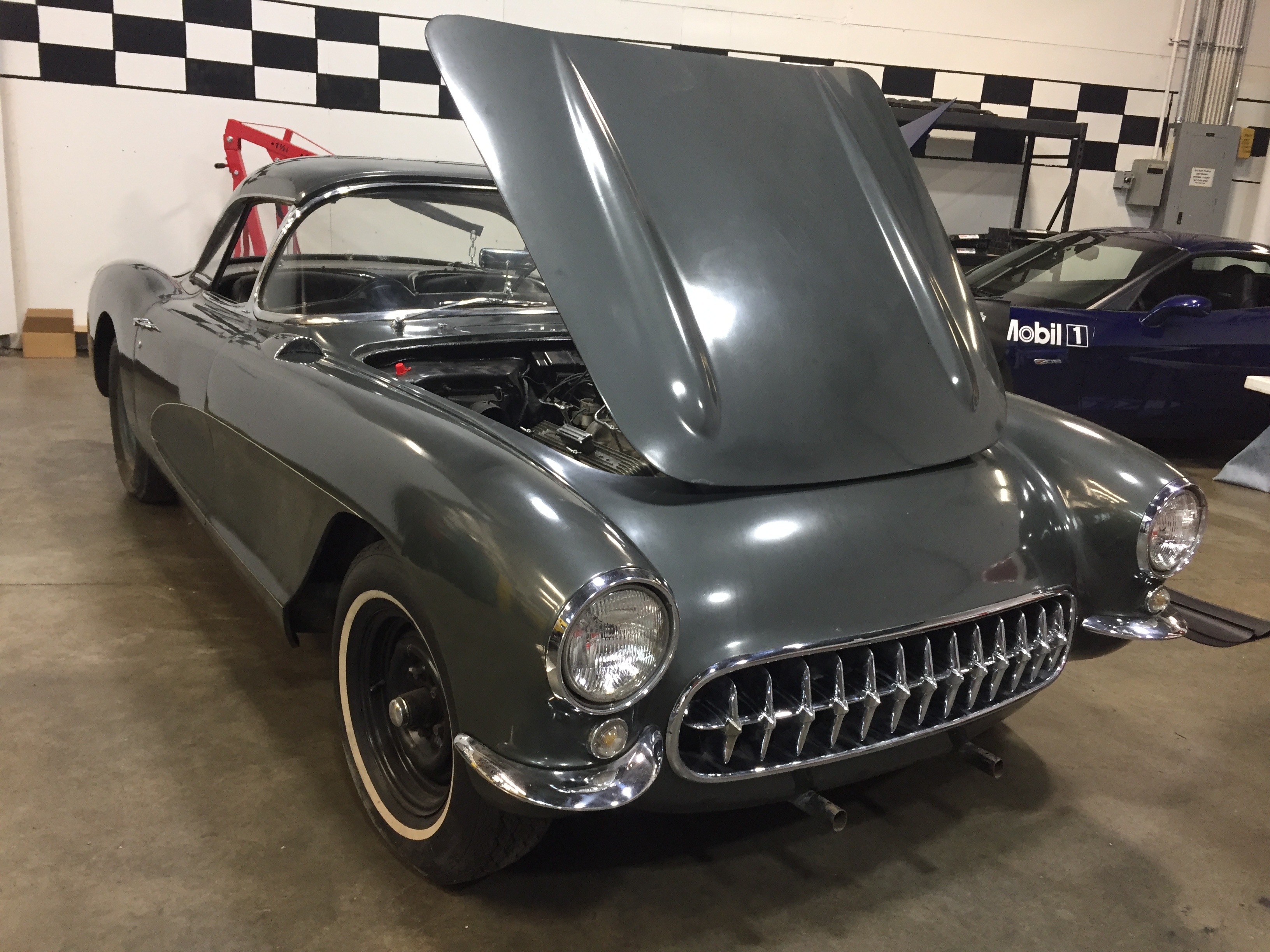
Like most car enthusiasts, Terral Wittgow vividly remembers the moment he first laid eyes on a Corvette. It was 1953 when his dad took him to a Chevrolet Dealership in Norfolk, Nebraska to look at new cars. Among them was a 1954 Corvette, the only car he could peer into the engine compartment over the fender. From that day forward, Terral made a promise to himself and the car Gods that he would one day own a Corvette.
However, life had different plans for Terral. Growing up on a farm, he soon found himself immersed in building his mechanical skills, pursuing a college education, and working to put himself through school. But in 1964, things began to change. Terral had secured a good job and finally had enough money to seriously consider purchasing his dream car – a Corvette.
After scouring the local newspaper in Omaha, Nebraska, he stumbled upon a small ad for a 1956 Corvette priced at $1,200. Although a hefty sum at the time, Terral was determined to gather the remaining funds needed to make his dream a reality. He sold his existing car piece by piece, borrowed some money from the bank, and soon became the proud owner of the 1956 Corvette.
However, the Corvette he purchased had seen better days. Originally owned by a dentist in Iowa, the car had suffered damage from a previous accident. The original engine, a 265, was beyond repair and had been replaced with a 327. Undeterred, Terral brought the Corvette home and began the journey of learning how to work on it.
Starting with a soft top, Terral soon discovered the harsh reality of Nebraska winters, forcing him to stuff blankets into the car to combat the cold. As time went on, he made various modifications and improvements, transforming it from a 3-speed to a 4-speed. Terral relished being the only one on his college campus with a sports car and even transitioned into drag racing. His passion for speed led him to the local drag strip, where he achieved great success, winning trophies for his class.
Throughout the years, Terral continued to refine his Corvette, rebuilding the engine and making modifications with the help of fellow enthusiasts and the machinists at his workplace, Cessna Aircraft. Although tempted to make additional modifications for performance gains, he resisted the urge, understanding that keeping the car in its original condition would ultimately increase its value.
Life took a turn when Terral met his future wife, who was bound for Australia. Faced with the choice of pursuing a career in engineering and racing cars or following his heart, Terral decided to leave behind his race car dreams and parked the Corvette at his dad’s farm, with the intention of returning to it one day. Unfortunately, time slipped away, and Terral never found himself in a position to work on the car again.
With a heavy heart, he faced the difficult decision of what to do with his beloved Corvette. Selling it locally was out of the question, as Terral couldn’t bear the thought of someone potentially destroying the memories and nostalgia attached to it. By chance, last fall, he reached out to the National Corvette Museum and they expressed interest in adding his car to their collection. Terral was more than happy to donate it, as he knew the Museum would care for it properly and preserve its historical significance.
In July 2016, the Museum picked up the 1956 Corvette from Nebraska. Terral, now 73 and wanting to avoid the physical strain of restoring the car himself, felt a sense of satisfaction in knowing that it would have a new home where it could be admired and appreciated. For him, the immortality of having his name associated with the car’s donation held more value than any monetary compensation. His late wife, Swana, shared the same sentiment, understanding the importance of preserving a piece of American automotive history.
Today, Terral and Swana’s donated Corvette resides in the Museum’s Maintenance and Preservation Department. Daniel Decker, a dedicated member of the team, is currently working on getting the car up and running again. Once restored, the 1956 Corvette will take its rightful place within the Museum’s Performance area, where visitors can marvel at its beauty and significance.
We extend our heartfelt gratitude to Terral and Swana Wittgow for their generosity and efforts in preserving the legacy of America’s Sports Car. Their donation ensures that future generations will have the opportunity to appreciate the rich history and craftsmanship embodied in this iconic vehicle.
If you also have a Corvette in need of a loving new home, please contact Connie Russell at 270-467-8815.
FAQs
1. How did Terral come to own the 1956 Corvette?
Terral worked hard to save up enough money to purchase his dream car. He stumbled upon a small ad in the local newspaper and managed to gather the necessary funds to buy the Corvette.
2. Why did Terral decide to donate the Corvette to the National Corvette Museum?
Terral wanted to ensure that his cherished Corvette would be properly taken care of and appreciated. He couldn’t bear the thought of it being mishandled or destroyed by someone who didn’t understand its significance.
3. What will happen to the donated Corvette?
The National Corvette Museum’s Maintenance and Preservation Department is currently working on restoring the car to its former glory. Once complete, it will be displayed in the Museum’s Performance area for visitors to enjoy.
Conclusion
Terral Wittgow’s donation of his beloved 1956 Corvette to the National Corvette Museum is a testament to the passion and dedication of car enthusiasts. It serves as a reminder that some possessions hold much more than just monetary value – they contain memories, dreams, and a piece of history. Thanks to Terral’s generosity, future generations will have the opportunity to appreciate and be inspired by America’s Sports Car. To learn more about the latest news and updates in the world of cars, visit Car news.